CYBB identified as a key immune hub gene linking lung cancer and atrial fibrillation
- PMID: 40533809
- PMCID: PMC12178056
- DOI: 10.1186/s13019-025-03510-x
CYBB identified as a key immune hub gene linking lung cancer and atrial fibrillation
Abstract
Background: The proportion of patients with lung cancer complicated by atrial fibrillation (AF) is increasing. Identifying shared molecular targets between these two conditions may provide important prognostic insights for patients with comorbidities.
Methods: The GSE8569 and GSE41177 datasets were downloaded from the Gene Expression Omnibus (GEO) database. Differential expression analysis was performed using the limma package in R. Weighted gene co-expression network analysis (WGCNA) was conducted to identify significant gene modules. Gene Ontology (GO) and Kyoto Encyclopedia of Genes and Genomes (KEGG) analyses, along with gene set enrichment analysis (GSEA), were used to explore biological functions. Clinical survival data for lung cancer were obtained from The Cancer Genome Atlas (TCGA), and receiver operating characteristic (ROC) analysis was conducted using the R package ROC (version 1.17.0.1).
Results: A total of 598 differentially expressed genes (DEGs) were identified. These DEGs were primarily enriched in cell proliferation, inflammatory responses, non-small cell lung cancer, the p53 signaling pathway, and the cell cycle. Three core genes (CYBB, ITGB2, FCER1G) were identified. Notably, CYBB was downregulated in lung cancer compared to normal tissue. Patients in the low-risk group had significantly better survival outcomes. Heatmap visualization showed that expression of CYBB decreased with increasing risk scores, suggesting a protective role.
Conclusion: CYBB expression may influence lung cancer prognosis and contribute to the pathogenesis of AF. Further research is needed to clarify CYBB's role in patients with both conditions.
Keywords: Atrial fibrillation; CYBB; Lung cancer; Prognosis.
© 2025. The Author(s).
Conflict of interest statement
Declarations. Ethical approval: The data in this article are from public databases and are exempt from ethical review. Competing interests: The authors declare no competing interests.
Figures
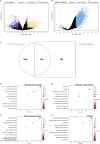
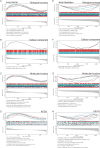
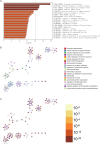

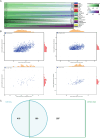
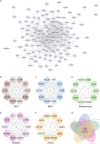
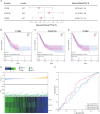
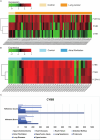
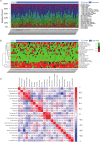
Similar articles
-
LYN and CYBB are pivotal immune and inflammatory genes as diagnostic biomarkers in recurrent spontaneous abortion.Front Immunol. 2025 Jul 7;16:1568536. doi: 10.3389/fimmu.2025.1568536. eCollection 2025. Front Immunol. 2025. PMID: 40692778 Free PMC article.
-
Identification and verification of FN1, P4HA1 and CREBBP as potential biomarkers in human atrial fibrillation.Math Biosci Eng. 2023 Feb 8;20(4):6947-6965. doi: 10.3934/mbe.2023300. Math Biosci Eng. 2023. PMID: 37161136
-
Identification of shared key genes and pathways in osteoarthritis and sarcopenia patients based on bioinformatics analysis.Zhong Nan Da Xue Xue Bao Yi Xue Ban. 2025 Mar 28;50(3):430-446. doi: 10.11817/j.issn.1672-7347.2025.240669. Zhong Nan Da Xue Xue Bao Yi Xue Ban. 2025. PMID: 40628511 Chinese, English.
-
The mitochondrial hub gene UCHL1 May serve as a potential biomarker for diagnosing diabetic cardiomyopathy: a comprehensive integration of biological pathways.BMC Med Genomics. 2025 Aug 11;18(1):129. doi: 10.1186/s12920-025-02199-0. BMC Med Genomics. 2025. PMID: 40790764 Free PMC article.
-
Pharmacological and electronic cigarette interventions for smoking cessation in adults: component network meta-analyses.Cochrane Database Syst Rev. 2023 Sep 12;9(9):CD015226. doi: 10.1002/14651858.CD015226.pub2. Cochrane Database Syst Rev. 2023. PMID: 37696529 Free PMC article.
References
-
- Leiter A, Veluswamy RR, Wisnivesky JP. The global burden of lung cancer: current status and future trends. Nat Rev Clin Oncol. 2023;20(9):624–39. - PubMed
MeSH terms
Substances
LinkOut - more resources
Full Text Sources
Medical
Research Materials
Miscellaneous

